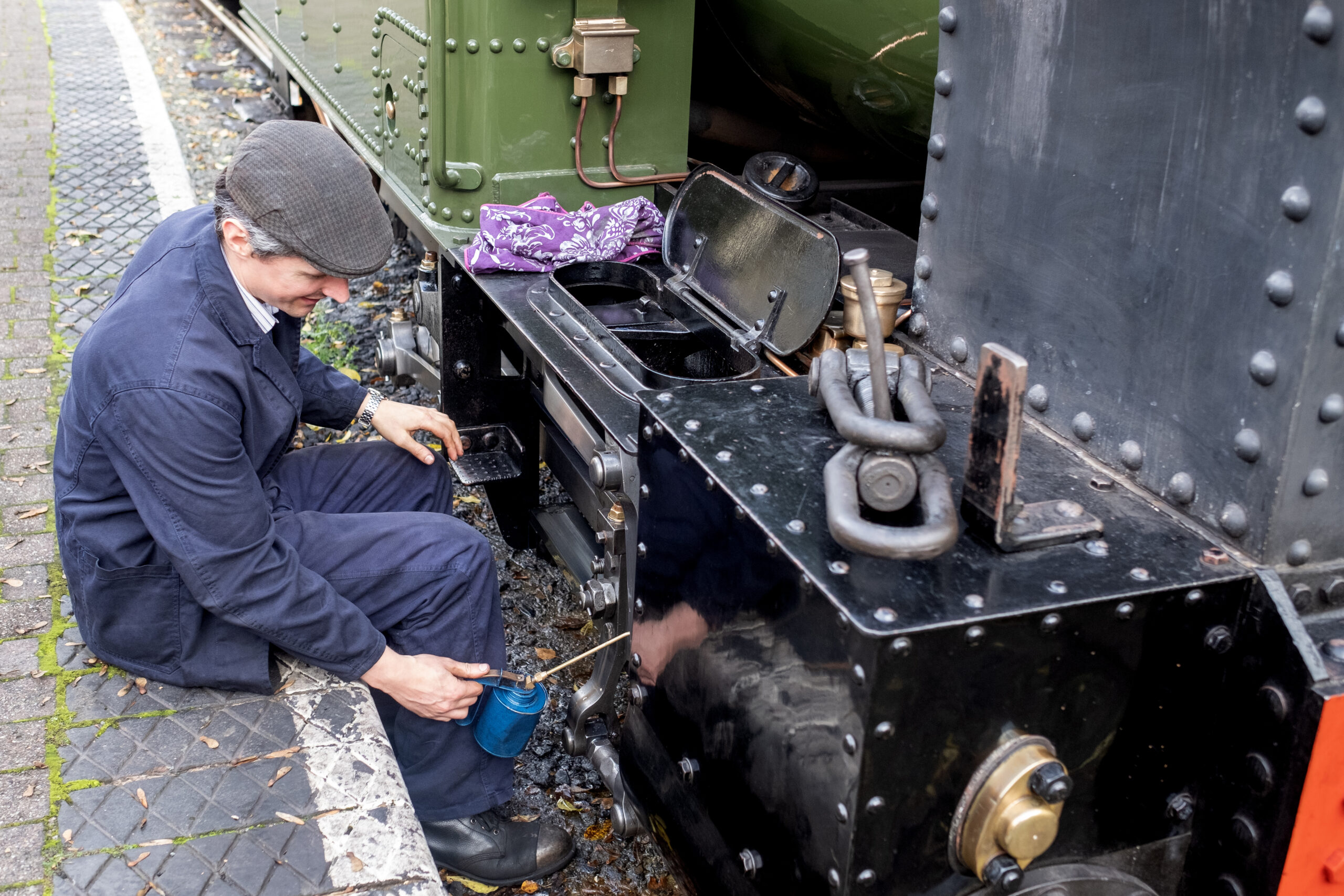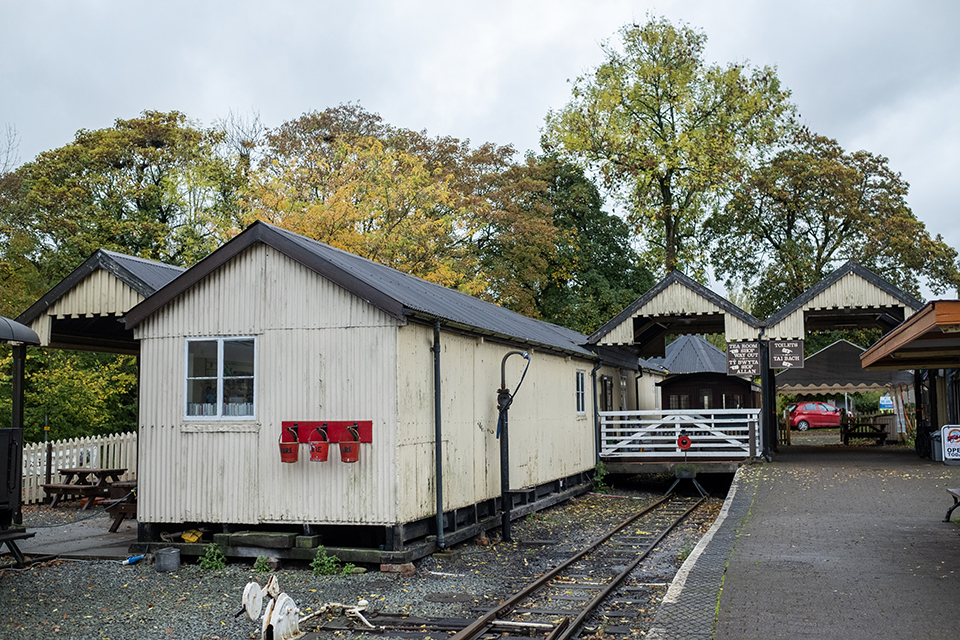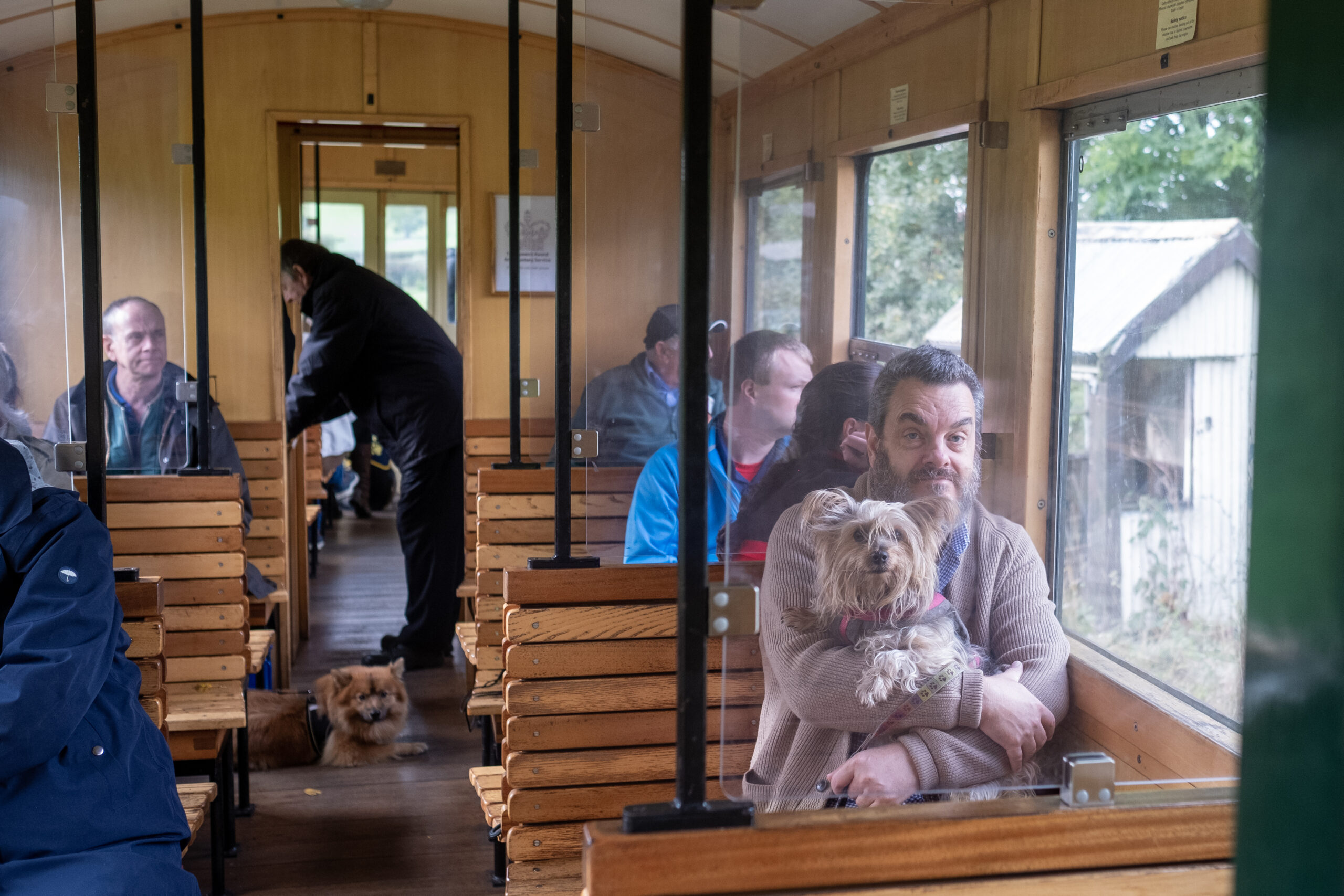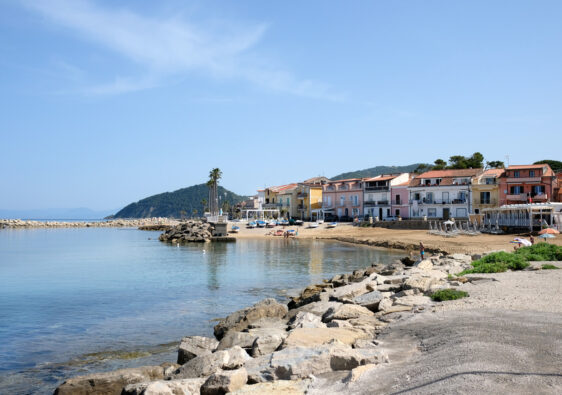As the historic steam locomotive, ‘The Earl,’ left the station, the chugging sound gradually increased. It can only be described as a child making a woo-woo sound—and let’s admit it, most adults do that, too. The station master blew his whistle, and a cloud of steam appeared. I’m on one of the great little trains in Wales: the Welshpool and Llanfair Heritage Light Railway.
One of my cherished childhood reads is ‘The Railway Children’ by Edith Nesbit. As I peer out of the window, I’m transported to the world of Roberta, Phyllis, and Peter, perched on the fence, eagerly waving at the passing passengers. Although the book was set in Yorkshire, the station I find myself in exudes a captivating historical charm. The volunteers, dressed in period costumes, orchestrate a seamless operation, breathing life into a historical tableau that resonates with the past.
The train weaves slowly into the mid-Wales countryside, following the delightful Banwy Valley from the village of Llanfair to Welshpool, where you can alight and wander. Or, after a short break watching the engine re-fuelled, jump back on and return to Welshpool. It’s a 16-mile round trip taking around 90 mins. I couldn’t resist peaking my head around the door in the station that said, ‘private’. What a delight – a place for the station master to sit and drink copious amounts of tea whilst filling in the paperwork. It made me wonder about the stories this station could tell, the people who have passed through, and the history it holds.
Experience the tranquility of a train journey through the rolling landscape. The slow pace of the train allows you to fully immerse yourself in the beauty of the countryside. Gaze at grazing cows, spot Welsh sheep, discover deer, behold hawks above, and if that isn’t enough, glimpse otters in the rushing river from your seat or the open balcony. On a crisp autumn day, watch the leaves, red, yellow and orange, shedding from the trees, dancing in the breeze before they land gently on the ground.
The history:
In 1901 the work started on the narrow gauge of 2ft 6inc built as a light railway to avoid some of the costs of railway construction. The narrow gauge allowed for tight curves and steep gradients. Supported by the Earl of Powys, the line was funded by borrowings, public funds, subscriptions, and gifts of land, but unfortunately, it was woefully short of capital. But on the 4th of April, 1903, the first passenger train ran. Even though the war (1914-18) brought a surge in business, it fell away again in 1920. In 1922 it merged into the Great Western, which absorbed the Welshpool and Llanfair. It made little difference to the traffic, and the buses started to compete, reducing the passenger to a mere trickle, and the service was discontinued in 1931. During World War 2, goods traffic enjoyed a revival, but again it was slow and uneconomic, with more significant and faster lorries arriving on the roads. So the last train ran on the 3rd of November 1956. However, people were keen to modernise after years of austerity, but the nostalgia for things past wasn’t there, and consequently, grants were unavailable or any public money. The people drew together to save the railway, and volunteers began clearing the overgrowths, and the Welshpool and Llanfair railway preservation Company Limited was formed in 1960. With limited recourses, the volunteers battled to remove sections of the line and restore some service. A significant step forward occurred in 1961 when locomotive No. 1, The Earl, finally returned to the line after being stored in Oswestry. Unfortunately, the original passenger carriages had been disposed of, but the W&L acquired several carriages and wagons from a line in Kent. The passenger service commenced again on the 6th of April 1963.
At last, some money was now coming in to help fund restoration expenses. More blows occurred when the council decided to make a car park and prepare a bypass. The railway would be cut back, and the second blow was in December 1964 when severe floods damaged the bridge over the River Banwy, but phew, services were restored a year later with help from the Royal engineers.
The railway needed new coaches for its expansion, and it managed to obtain what it needed from Austria and Hungry. Four attractive balconies ended coaches were donated by the Zillertalbahn in Austria in 1968, and in 1969 a giant steam engine was bought from Austria too to expand the fleet. Finally, in 1972 the track was re-opened as far as Sylfaem. Later more work was done; collapsed culverts had to be repaired and new sleepers replaced. Then, in July 1981, the first service trains ran again to Welshpool. Since then, their tradition of turning to other parts of the world has continued to acquire more equipment and engines.
The Welshpool and Llanfair heritage light railway is not run on steam alone; the volunteers are at the heart of the powerhouse. Working tirelessly today as they did in the past to ensure everything runs smoothly from up-keeping and driving the trains to tending the gardens and everything in between – admin, social media, running the cafe and book shop, which I recommend you visit at the end of the trip.
At the end of my triple, I found myself in the warm embrace of the traditional station tearoom, enjoying a hearty bowl of homemade soup – the perfect comfort for a bright but cold Autumn day. The tearoom offers a wide variety of treats, from hot to cold, cakes to sandwiches. On a summer’s day, I recommend you sit with an ice cream and watch the next set of people arrive. Most will have a broad grin as they sight the engine and carriage for the first time, children with wide eyes and full of adventure. This experience is no longer just for men passionate about steam and involved in railway clubs, but for all, a place where families and couples can create lasting memories.
So take a picnic on board or book an afternoon tea – dogs are welcome. It’s something traditional; it’s friendly, charming and exudes romance. Steam slows down time and allows you to enjoy and soak in the loveliness surrounding you. Oh, and don’t forget the gift shop which is stocked with a wide array of books, dvd’s and souvenirs for all ages. I of course bought a fridge magnet to go with the rest I have stuck to my fridge.

























